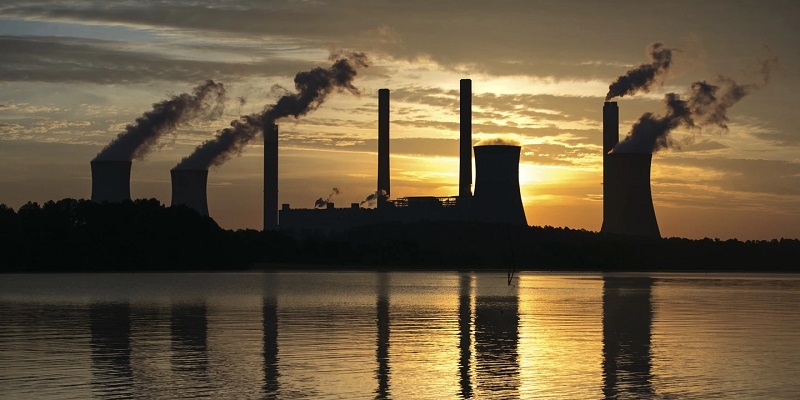Shortage Of Fossil Fuels
| Date :24-Jul-2019 |

By Nantoo Banerjee:
India is becoming increasingly dependent on imports. Coal, oil and gas are three main components of fossil fuels. India ranks fifth in the world in coal reserves. It is also the world’s third largest coal consumer after China and the USA. India’s coal reserve is around 301.6 billion tonnes.
THE centuries old Scottish proverb that ‘‘if wishes were horses, beggars would ride” is so true about India’s wish to become a major producer of fossil fuels. The truth is: it is becoming increasingly dependent on imports. Coal, oil and gas are three main components of fossil fuels. India ranks fifth in the world in coal reserves. It is also the world’s third largest coal consumer after China and the USA. India’s coal reserve is around 301.6 billion tonnes. Out of which over 260 billion tonnes are non-cooking coal – mainly used for power generation, cement and fertiliser production.
Despite this, the country is becoming increasingly dependent on import. Coal India, which enjoys a near monopoly in the country’s coal production, mined only 607 million tonnes of coal in 2018-19, marginally missing its modest annual target of 610 million tonnes. In contrast, China produced four billion tonnes of coal in 2018. India’s current coal demand is close to only around 900 million tonnes. The country ended last year with a record import of 234 million tonnes of coal, about nine per cent more than in 2017-18. It imported 52 million tonnes of cooking coal. Going by the trend, this year’s coal import may set yet another new record.
While sitting on large reserves and not exploiting them enough to force import may appear to be one kind of crime, costing the country billions of precious dollars annually, not trying enough to prospect, explore and exploit vital energy resources like oil and gas could be even worse. Four years ago, Prime Minister Narendra Modi said at an energy conference — Urja Sangam 2015 — that India needs to bring down its import dependence on oil and gas to 67 per cent of its requirement by 2022. “We currently import around 77 per cent in energy sector, in oil and gas. We can reduce this import by at least 10 per cent by 2022. This 10 per cent we will produce ourselves and this should be our dream,” he said.
India will be celebrating its 75th year of independence in 2022 and lowering imports will be a tribute to those who sacrificed their lives for our freedom, the Prime Minister said. “If we become successful in reducing import by 10 per cent in 2022, by achieving 10 per cent growth in domestic production, then I can assure you that by 2030 we can reduce this import to 50 per cent,” he added. Official figures show that the country’s crude oil production dropped 4.15 per cent, in last year alone, to only 34.2 million tonnes.
According to the Government’s Petroleum Planning and Analysis Cell (PPAC), India spent US$ 111.9 billion on oil imports in 2018-19, up from US$ 87.8 billion in the previous fiscal. In terms of natural gas, too, the numbers are disappointing, with the production figures showing only a 0.7 per cent rise in the past 10 years, from 32,416.97 million metric standard cubic meter in 2007-08 to 32,649.31 in 2017-18. What is more alarming is that crude oil production has declined 4.7 per cent and natural gas by 2.9 per cent since 2014-15 despite their consumption increasing at a healthy annual rate. What is the main reason behind the declining trend in the county’s oil and gas production? Does India have enough oil and gas reserves? Is the country spending enough in oil and gas exploration? Few know definitively about India’s true potential oil and gas reserves. The money spent on prospecting and exploration is a pittance compared to the world standards.
India possesses over three million Sq. Kms. of sedimentary basins. The number of exploration wells drilled in India in any year is less than 500 against several thousands of wells drilled in North America. Few will disagree that the country’s hydrocarbons basins are highly under explored? An estimated 75 per cent of India’s sedimentary basins have yet to be adequately explored. Of the 26 known sedimentary basins in the country, less than 10 may be currently producing some quantities of oil and gas. The current production trend in India of fossil fuels should be a major energy security concern for the Government and the nation. West Asian exporters of oil and gas and south east Asian and Australian suppliers of coal do not want India to achieve higher production of these fossil fuels. West Asian oil firms propose to spend billions of dollars in India to set up refineries, instead.
What is really going on? Maybe, it is time for the Prime Minister’s Office (PMO) to get into the act to see that concrete steps are taken in the oil and gas sector to fulfil the dream of the Prime Minister at least for the sake of the country’s energy security. The 2019 Lok Sabha election delivered an undeniable mandate for Prime Minister Modi to continue with his structural and financial reform agenda, underpinned by a litany of so-called energy sector improvements that have already secured billions of dollars in US investment. The International Energy Agency said in its World Energy Investment 2019 report that foreign energy investments in India grew to $85 billion under Modi’s leadership, a record 12 per cent increase, reflecting the highest growth of energy investments anywhere in the world. Where did those billions go? At least, they did not help check India’s falling production and growing import dependence of oil, gas and coal? Paradoxically, the US oil embargo on Iran for an indefinite period threatens to further increase India’s oil and gas import bills.